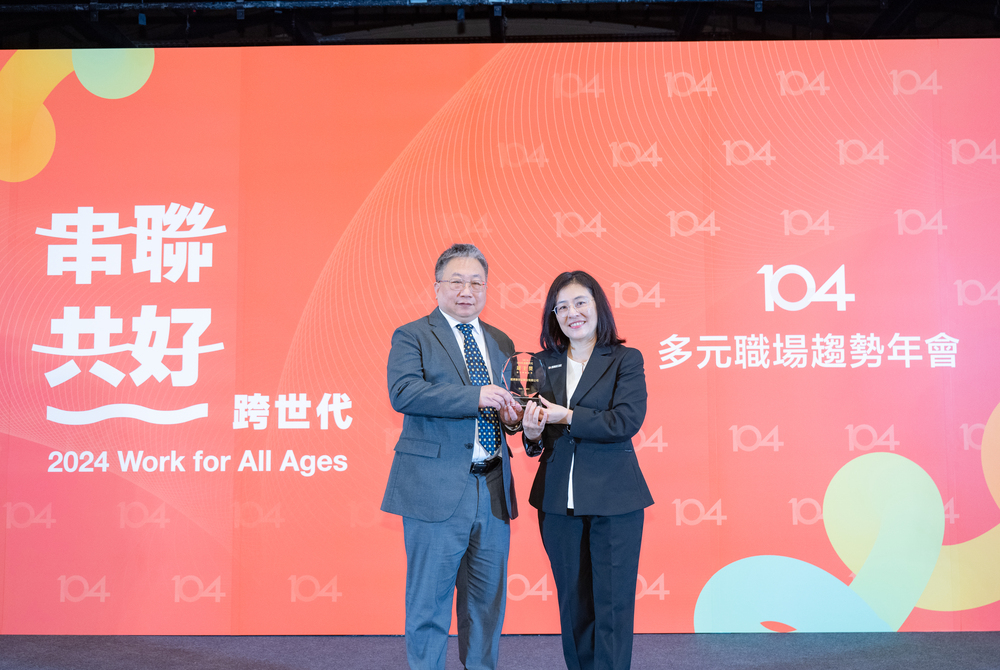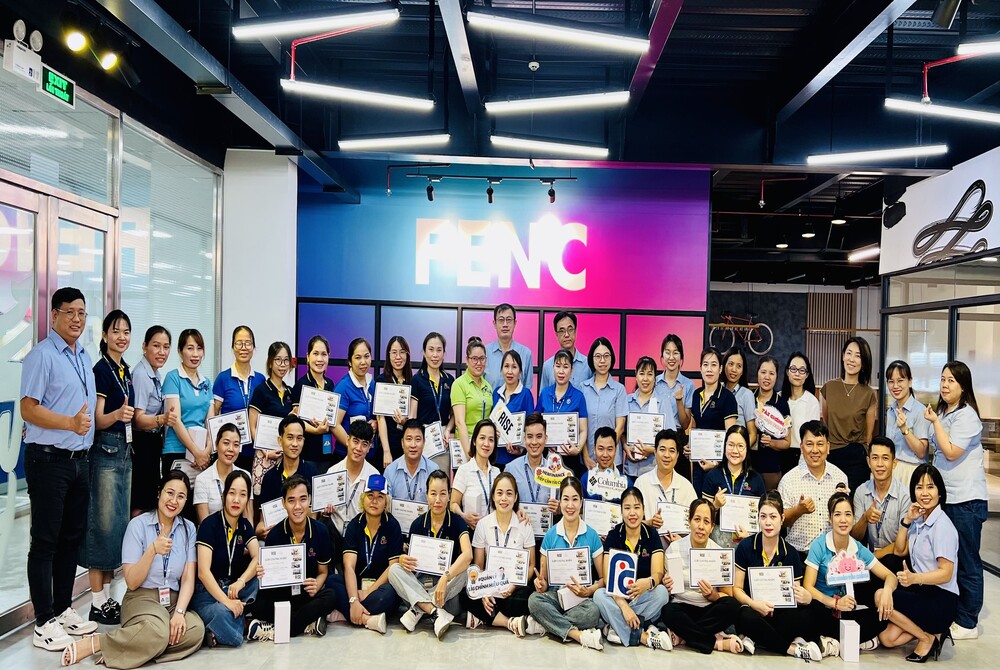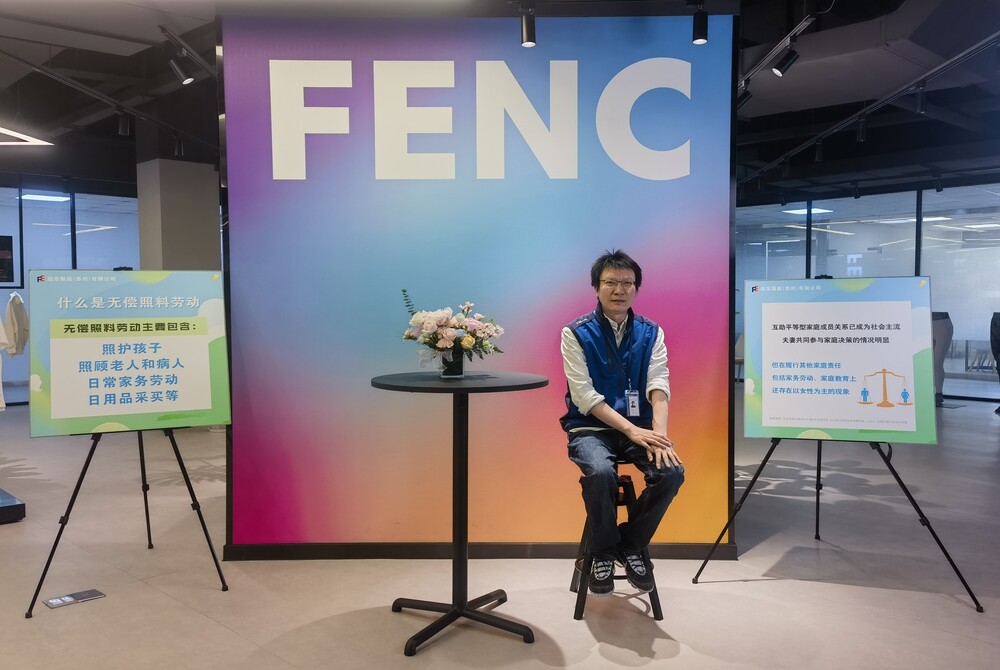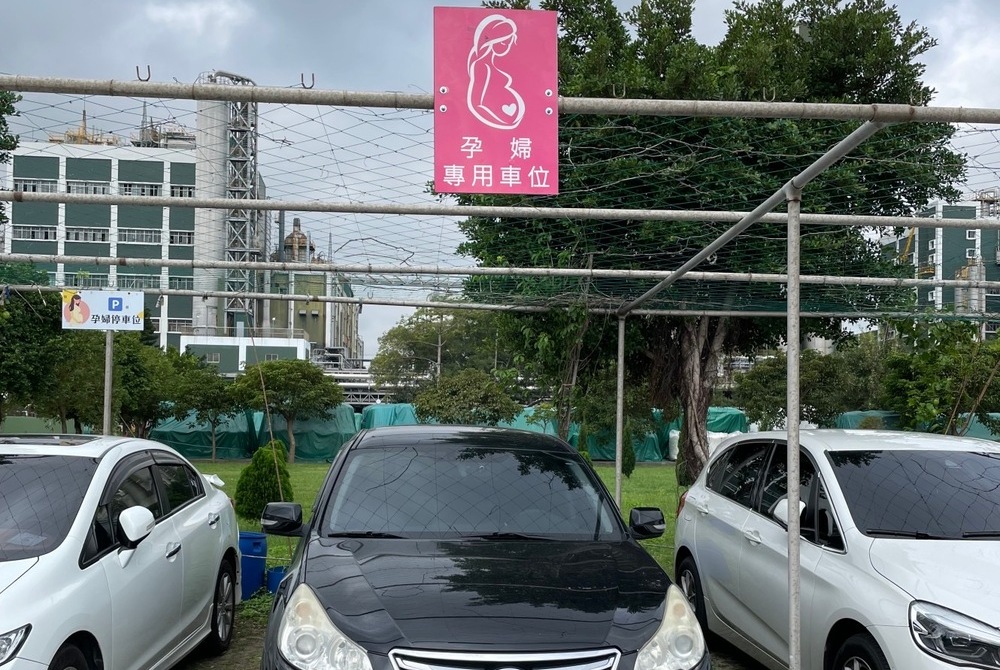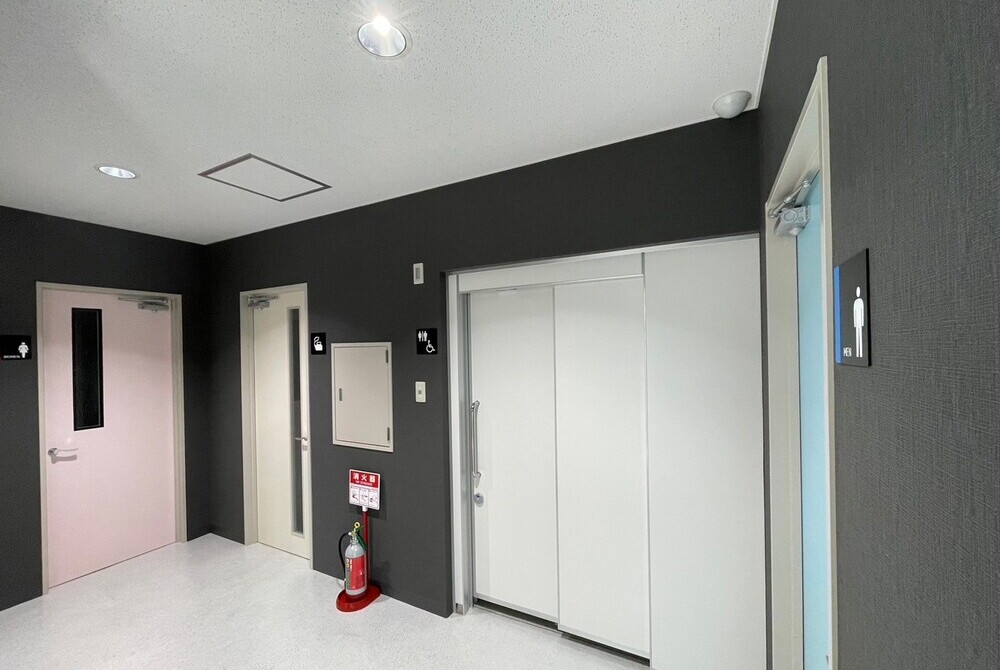Diversity and Inclusion
Diversity, Equity, and Inclusion Policy Statement
Our company is a multinational corporation with operations spanning across Taiwan, mainland China, Vietnam, Japan, the United States, and beyond, encompassing a diverse workforce of varying cultural backgrounds, ethnicities, ages, and genders. Recognizing this diversity, we are committed to fostering an inclusive and equitable work environment, integrating diversity and inclusion into our corporate culture.We value the diversity of each individual employee and respect their unique backgrounds and perspectives. We firmly believe that the richness of different cultures and backgrounds can bring about innovation and growth, thus we are dedicated to establishing a workplace that is respectful, equitable, and inclusive.
To achieve this goal, we regularly organize various cultural exchange activities to encourage employees to share their cultures and values. Additionally, we provide education and training programs to help employees better understand and respect colleagues from different races, genders, ages, and cultural backgrounds, advocating for mutual support and collaboration to foster a harmonious and cohesive work environment. We firmly believe that by promoting diversity and inclusion, we can unleash the creativity and vitality of our team, driving continuous growth and success for our company. Therefore, we are committed to upholding our diversity, equity, and inclusion policy and will continue to strive towards creating a fair, open, and dynamic workplace for all.
FENC has a total of 20,386 employees worldwide, among whom, 65 are with physical or mental disabilities and 1,570 are ethnic minorities. As an advocate of localizing work opportunities across its global locations, its employees comprise mainly local residents. At FENC production and operation sites in Vietnam, approximately 65% of the management personnel are Vietnamese nationals.
Employee Nationality Composition
Unit: person
2021 | 2022 | 2023 | 2024 | |
Taiwan | 4,511 | 4,502 | 4,322 | 3,995 |
Mainland China | 5,426 | 4,821 | 4,668 | 4,228 |
Vietnam | 10,591 | 11,401 | 9,557 | 10,938 |
Japan | 160 | 196 | 276 | 287 |
U.S. | 184 | 185 | 178 | 172 |
the Philippines | 819 | 840 | 794 | 763 |
Indonesia | 1 | 1 | 1 | 1 |
Malaysia | 0 | 1 | 1 | 1 |
India | 0 | 1 | 2 | 0 |
Türkiye | 0 | 1 | 1 | 0 |
South Korea | 0 | 0 | 1 | 1 |
Total | 21,692 | 21,949 | 19,801 | 20,386 |
Gender Equality
FENC values gender equality. We are keen on creating gender-friendly workplace and system. While the conglomerate spans across industries from the upstream to downstream, the up- and midstream industries rely more on chemical-related expertise where a higher concentration of the workforce is male. The downstream, which consists mainly of the textile industry, is composed of a higher percentage of female employees. Overall, the ratio between female and male supervisors are 2:3, which is consistent with the industry chain distribution. Corporate expansion also expanded the number of supervisors by 22% in the recent decade. Among them, the number of female supervisors grew by 51%. The statistics reflect the Company’s acknowledgment of and fair treatment to the hard work put in by female supervisors with the reward they deserve. The Company is also determined to incorporate gender equality as part of its corporate system and culture. Each year, FENC measures its average annual regular salary of the company against the official statistics of average annual regular salary. In 2024, the average annual regular salary of the company offered by FENC is 38% higher than the local average. Average regular earnings for female employees, especially, averaged 50% higher than the local numbers, while those for male employees are 33% higher, which demonstrates FENC’s contribution to pay equity. For regional data, please refer to Employee Care.
The 2024 statistics indicated that female employees represented 51% of FENC’s workforce, which met the Company’s short-term target. The percentage of female managers reached 32% with 19% being senior female executives, while the short-term targets are 35% female managers and 20% senior female executives.
Statistics on Female Employees
2021 | 2022 | 2023 | 2024 | 2025 Target | |
Female Employees / Total Employees | 50% | 50% | 50% | 51% | 50% |
Female Managers / Total Managers | 29% | 30% | 31% | 32% | 35% |
Female Junior Managers / Total Junior Managers | 29% | 31% | 31% | 32% | 35% |
Female Executive Managers / Total Executive Managers | 18% | 17% | 20% | 19% | 20% |
Female Managers in Profit-seeking Departments / Total Managers in Profit-seeking Departments | 27% | 29% | 29% | 31% | 32% |
Female STEM Employees / Total STEM Employees | 30% | 22% | 22% | 27% | 30% |
Female Non-management Employees / Total Non-management Employees | 54% | 53% | 53% | 52% | 52% |
| Note: 1. “Junior managers” refers to managers, deputy managers and section chiefs. 2. “Executive managers” refers to all positions above the assistant vice president. 3. “Non-management employees” refers to rank-and-file employees and operators. 4. “Profit-seeking departments” refers to the business units in Taiwan, excluding the Corporate Management and the operation and business units at overseas FENC sites. 5. “STEM” stands for science, technology, engineering and mathematics. STEM workers are those who apply their knowledge in these fields in their daily duties. |
The results of the gender pay gap study for FENC sites across the globe correspond to the diverse industry and cultural characteristics in different regions. In Taiwan, FENC determines employee salaries based on education, experience, and performance, with no gender-based differences for management-level positions. A higher concentration in the textile and garment industries is observed among management-level positions in Vietnam, and the two industries are where female professionals tend to outnumber their male counterparts and earn higher salaries for their well-developed expertise. FENC production sites in mainland China and the U.S. are predominately in the chemical sector, where higher percentages of male technicians and engineers are employed, hence receiving higher remuneration. In Japan, salaries for female managers are slightly higher than those for their male counterparts while equal remuneration is nearly achieved between male and female rank-and-file employees. The differences in the gender composition across FENC’s industry chain reflect the industry-specific gender patterns, hence influencing the salary level. However, FENC adheres to equal remuneration and offers salaries based on employees’ skill sets. These results reflect the fairness of FENC’s performance evaluation mechanism.
Salary Ratio by Gender
(Female to Male) | Section Chief and Above | Rank-and-file Employee | Factory Worker | |
Taiwan | 2021 | 1.05:1 | 1.01:1 | 1.22:1 |
2022 | 0.96:1 | 1.01:1 | 1.22:1 | |
2023 | 0.96:1 | 1.02:1 | 1.18:1 | |
2024 | 1.01:1 | 1.04:1 | 1.19:1 | |
| Mainland China | 2021 | 0.83:1 | 0.84:1 | 0.91:1 |
2022 | 0.82:1 | 0.78:1 | 0.91:1 | |
2023 | 0.75:1 | 0.79:1 | 0.91:1 | |
2024 | 0.83:1 | 0.83:1 | 0.95:1 | |
Vietnam | 2021 | 1.17:1 | 1.04:1 | 0.95:1 |
2022 | 1.11:1 | 1.02:1 | 0.94:1 | |
2023 | 1.01:1 | 1.01:1 | 0.93:1 | |
2024 | 1.05:1 | 0.97:1 | 0.94:1 | |
Japan | 2021 | 0.93:1 | 0.96:1 | 0.93:1 |
2022 | 1.01:1 | 0.86:1 | 0.91:1 | |
2023 | 1.18:1 | 1.01:1 | 0.92:1 | |
2024 | 1.01:1 | 1.01:1 | 0.97:1 | |
U.S. | 2021 | 0.97:1 | 0.94:1 | 1.00:1 |
2022 | 0.99:1 | 0.97:1 | 1.00:1 | |
2023 | 1.00:1 | 0.94:1 | 0.99:1 | |
2024 | 0.83:1 | 0.95:1 | 0.99:1 | |
| Note: 1. The ratio is derived by female base salary to male base salary for the same rank of job. 2. Base salary” refers to the remuneration paid to employees in December of each year, including salaries with monthly stipends and performance bonuses. |
Gender Pay Indicators
(Female to Male) | 2023 | 2024 | ||
Base Salary | Base Salary + Bonus | Base Salary | Base Salary + Bonus | |
Managers in Business Operation and Management | 0.82:1 | 0.81:1 | 0.84:1 | 0.84:1 |
Middle and Executive Managers | 0.95:1 | 0.96:1 | 0.97:1 | 0.98:1 |
Non-management Level | 0.94:1 | 0.94:1 | 0.95:1 | 0.96:1 |
Gender Pay Gap | ||||
2023 | 2024 | |||
Monthly Salary | Median | 1% | 4% | |
Average | 6% | 5% | ||
Bonus | Median | 29% | -5% | |
Average | 0% | -2% | ||
| Note: 1. “Managers in business operation and management” refers to all positions above the assistant vice president. 2. “Middle and executive managers” refers to managers, deputy managers and section chiefs. 3. The number of “non-management-level employees” is calculated as the sum of employees not included in the two categories above. 4. “Base salary” refers to the remuneration paid to employees in December of each year, including salaries with monthly stipends and performance bonuses. 5. “Bonus” refers to incentives such as year-end bonuses, employee compensation and profit sharing. 6. The gender pay gap is calculated as the percentage of male median/average salary/bonus higher (+) or lower (-) than the female median/average salary / bonus. |
Gender equality and applicable regulatory mandates are respected at all FENC business sites. We are consistent with the spirit of Act of Gender Equality in Employment in Taiwan as well as Regulations Concerning the Labor Protection of Female Staff and Workers in mainland China. We protect the rights of female employees, offering parental leave and breastfeeding rooms at our facilities. We also limit overtime and prohibit tasks that may potentially harm mothers and their babies. Employees returning after maternity leave receive equal pay for equal work. We provide workplace environment ideal for pregnant employees, such as avoiding tasks that might affect their health and using specially designed chairs to reduce discomfort at work. Female employees in Vietnam who are 7-month pregnant may reduce working time by 1 hour per day while receiving full pay. They are also entitled to 5 days off for prenatal checkups and 6-month maternity leave.
FENC has established measures to prevent, control and reprimand sexual harassment and provided channels for filing grievances. Employees may file such grievance claims through departmental supervisors or Human Resources Department. The unit receiving the claim shall establish a team within 5 days of receiving the claim with over 50% female members to initiate the investigation. The investigation shall conclude within 2 months and all information shall be kept confidential. The individual against which the claim is filed shall have the opportunity for rebuttal. We also conduct regular training for the entire staff to prevent any occurrence of sexual harassment.
The Company has robust deputy and family care leave system and has built a family-friendly workplace that helps employees achieve work-life balance.
Application of Parental Leave and Returning Statistics in Taiwan
2021 | 2022 | 2023 | 2024 | ||
Entitled to Parental Leave | Male | 219 | 199 | 257 | 188 |
Female | 43 | 53 | 47 | 45 | |
Total | 262 | 252 | 304 | 233 | |
Number Applied | Male | 6 | 8 | 7 | 12 |
Female | 21 | 24 | 15 | 19 | |
Total | 27 | 32 | 22 | 31 | |
Number Should Returned | Male | 4 | 8 | 8 | 5 |
Female | 22 | 19 | 16 | 13 | |
Total | 26 | 27 | 24 | 18 | |
Number Returned | Male | 4 | 8 | 7 | 3 |
Female | 18 | 19 | 15 | 13 | |
Total | 22 | 27 | 22 | 16 | |
Return Rate | Male | 100% | 100% | 88% | 60% |
Female | 82% | 95% | 94% | 100% | |
Total | 85% | 96% | 92% | 89% | |
Returned over One Year | Male | - | 1 | 2 | 2 |
Female | 13 | 16 | 12 | 9 | |
Total | 13 | 17 | 14 | 11 | |
Retention Rate | Male | - | 25% | 25% | 29% |
Female | 37% | 89% | 67% | 60% | |
Total | 37% | 77% | 54% | 50% | |
Note: 1.The number of employees eligible for parental leave is the sum of employees applying for maternity and paternity leave in the past three years. Departed employees are excluded. 2.Return Rate = Number Returned ÷ Number Should Return 3.Retention Rate = Returned over One Year ÷ Number Returned Last Year |
Cross-National Maternity and Family Support Policies
Taiwan | Mainland China | Vietnam | Japan | U.S. | |
Paid Maternity Leave | 56 days | 98+60 days | 180 days | 42 days pre-delivery, 56 days post-delivery | 12 weeks |
Paid Maternity Checkup Leave | 7 days | 16+8N | 5 days | 0 | |
Paid Spouse Maternity Leave | 7 days | 10 days | 5 or 7 days | 0 | |
Flexible Working Hours | 1 hour per day | 1 hour per day | 1 hour per day | 2 hours per day | 1 hour per day |
Middle-aged and Elderly Employee Care
FENC is approaching middle-aged and elderly employee care in a way that reflects its unique corporate characteristics and practices. With a workforce that averages 45 years of age and 16 years in service, 49% of FENC’s employees are considered middle-aged or elderly, referring to employees over 45 years old. Therefore, FENC is creating an inclusive workplace that fosters multi-generational collaboration and where employees with diversity in ages, backgrounds and professional expertise may work and thrive together.
The executive management at FENC has publicly pledged to fight age discrimination, and taken action to keep employees safe from such discrimination during recruitment, employment, training and retention. As early as 1989, employees at FENC had formed a corporate union. The Company has also set up entities such as the Employee Pension Committee and labor-management meetings with rules and regulations to support and protect the rights of middle-aged and elderly employees.
Meanwhile, FENC believes in helping employees strike a balance between work and family life, and offers recreational programs designed for middle-aged and elderly employees, such as calligraphy, fitness and strength training classes. Another focus is health, which is promoted through regular checkups, lectures, government-funded vaccinations, in-house clinics and weight loss programs, as well as stress relief courses available on the Company’s digital platform. Through these efforts, FENC is protecting employees’ physical and mental well-being.
At FENC, middle-aged and elderly employees are able to maximize their skills, which is accomplished through the Company’s consistent efforts to improve efficiency and comfort by refining equipment and processes, and to enhance safety and convenience by incorporating digital technologies and barrier-free facilities. These initiatives represent FENC’s support for its employees, and more importantly, the determination to promote workplace diversity and inclusion.








